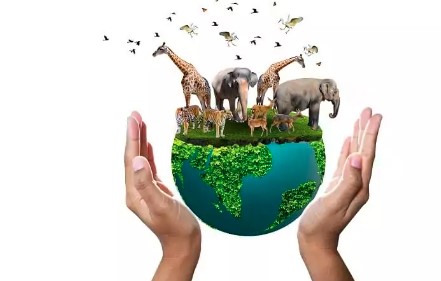Endangered ecosystems are facing unprecedented threats from human activities, climate change, and habitat destruction. These vital ecosystems are home to diverse flora and fauna and provide essential services such as clean air, water, and food security. Protecting these ecosystems is not only crucial for biodiversity conservation but also for the well-being of humanity and the planet as a whole. In this comprehensive guide, we’ll explore strategies for safeguarding endangered ecosystems, preserving biodiversity, and ensuring the sustainability of our planet for future generations.

Understanding Endangered Ecosystems
Endangered ecosystems encompass a wide range of habitats, from tropical rainforests and coral reefs to grasslands and wetlands. These ecosystems are characterized by high levels of biodiversity and provide critical habitat for numerous plant and animal species. However, they are also among the most vulnerable to human-induced threats, including deforestation, pollution, overexploitation, and climate change.
Threats to Endangered Ecosystems
- Deforestation: Clearing of forests for agriculture, logging, and urbanization destroys critical habitat for countless species and contributes to biodiversity loss.
- Pollution: Contamination of air, water, and soil from industrial activities, waste disposal, and agricultural runoff poses significant threats to ecosystem health and biodiversity.
- Overexploitation: Unsustainable harvesting of natural resources, such as overfishing and poaching, depletes populations of species and disrupts ecosystem functioning.
- Climate Change: Rising temperatures, changing precipitation patterns, and extreme weather events driven by climate change pose existential threats to ecosystems worldwide, leading to habitat loss, species extinction, and ecosystem degradation.
Strategies for Conservation and Preservation
Protecting endangered ecosystems requires a multifaceted approach that addresses both immediate threats and underlying drivers of ecosystem decline. From policy interventions and conservation initiatives to community engagement and sustainable development practices, a variety of strategies can help safeguard these vital ecosystems and promote their long-term resilience.
Establishing Protected Areas
One of the most effective ways to conserve endangered ecosystems is by establishing protected areas, such as national parks, wildlife reserves, and marine sanctuaries. These protected areas serve as refuges for biodiversity, providing habitat for endangered species and safeguarding critical ecosystem functions. By designating and managing protected areas effectively, governments and conservation organizations can preserve fragile ecosystems and promote biodiversity conservation.
Habitat Restoration and Rehabilitation
In addition to protecting existing habitat, efforts to restore and rehabilitate degraded ecosystems are essential for reversing ecosystem decline and promoting recovery. Restoration projects, such as reforestation, wetland restoration, and coral reef rehabilitation, aim to restore ecosystem structure and function, enhance biodiversity, and mitigate the impacts of habitat loss and degradation. By restoring degraded ecosystems, we can help rebuild ecological resilience and create healthier, more sustainable environments for future generations.
Sustainable Land Use and Resource Management
Promoting sustainable land use and resource management practices is critical for minimizing the negative impacts of human activities on endangered ecosystems. By implementing sustainable forestry, agriculture, and fisheries practices, we can reduce habitat destruction, conserve biodiversity, and ensure the long-term viability of natural resources. Sustainable development initiatives that prioritize conservation and environmental stewardship can help strike a balance between human needs and ecosystem preservation, promoting harmony between people and nature.
Conservation Education and Awareness
Raising awareness about the importance of endangered ecosystems and the threats they face is essential for mobilizing public support and fostering a culture of conservation. Conservation education programs, outreach campaigns, and community engagement initiatives can help empower individuals and communities to take action to protect their local ecosystems. By educating the public about the value of biodiversity and the benefits of ecosystem conservation, we can inspire collective action and promote a shared commitment to environmental stewardship.
Policy Reform and Advocacy
Advocating for policy reform and enacting stronger environmental regulations. This is crucial for addressing the underlying drivers of ecosystem decline. As well as promoting sustainable development practices. Governments, policymakers, and advocacy organizations play a vital role in shaping policies and legislation that protect endangered ecosystems, conserve biodiversity, and promote sustainable resource management. By advocating for stronger environmental protections, we can hold policymakers accountable and ensure that ecosystem conservation remains a top priority.
Collaborative Partnerships and Stakeholder Engagement
Protecting endangered ecosystems requires collaboration and cooperation. Especially among diverse stakeholders, including governments, NGOs, local communities, indigenous peoples, and the private sector. Collaborative partnerships that involve stakeholders at all levels can help mobilize resources. To share knowledge and expertise, and implement effective conservation strategies. By working together towards common goals, we can leverage collective efforts. All aimed to address complex environmental challenges. As well as to safeguard endangered ecosystems for future generations.
Conclusion
Safeguarding endangered ecosystems is a pressing global challenge that requires urgent action and collective commitment. By implementing strategies for conservation and preservation. We can protect vital habitats. We can preserve biodiversity, and ensure the long-term sustainability of our planet. From establishing protected areas and restoring degraded ecosystems. To promoting sustainable land use practices and raising awareness about the importance of conservation. Every individual and organization has a role to play in protecting endangered ecosystems. Together, we can build a more resilient and sustainable future for all life on Earth.

